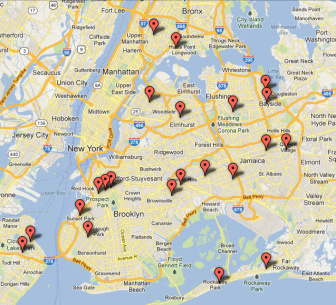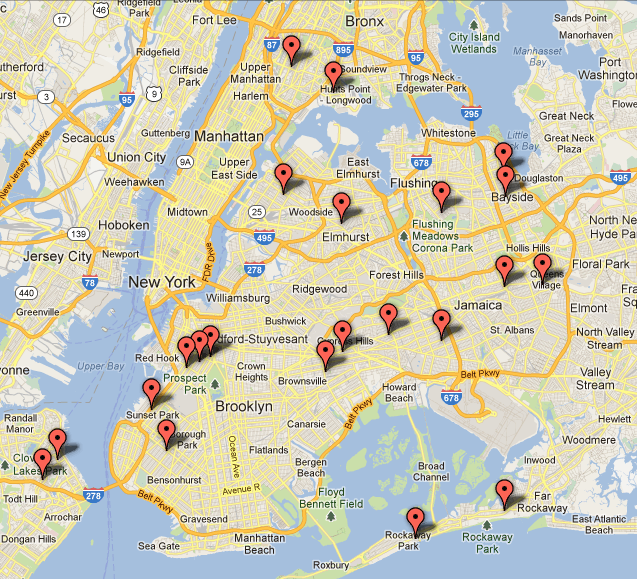NEW YORK--New York’s juvenile justice system is slowly being overhauled by Gov. Andrew Cuomo’s Close To Home initiative, a set of proposals designed to keep youth close to their communities and facilitate their return to society.
 Last fall, about 200 juvenile delinquents were transferred from non-secure facilities upstate to equally secure, residential facilities in the city and placed in or close to their communities. By the end of this year, at least 130 city juveniles who have been detained in limited-secure facilities in New York state are also scheduled to be moved. Non-secure facilities do not rely on physically restricting constructions or hardware. Confinement and escape are not a primary concern. Limited-secure facilities have certain security measures, such as fences and locked room doors.
Last fall, about 200 juvenile delinquents were transferred from non-secure facilities upstate to equally secure, residential facilities in the city and placed in or close to their communities. By the end of this year, at least 130 city juveniles who have been detained in limited-secure facilities in New York state are also scheduled to be moved. Non-secure facilities do not rely on physically restricting constructions or hardware. Confinement and escape are not a primary concern. Limited-secure facilities have certain security measures, such as fences and locked room doors.
Advocates believe the initiative will improve the lives of youth after they leave the system while increasing public safety and reducing the costs. Skeptics are not so sure. They believe there has been a lack of public transparency and worry the initiative might become another pipeline to prison.
The move shifts responsibility from the Office of Children and Family Services (OCFS) to the New York City Administration for Children’s Services, which is now in charge of overseeing the young people’s various needs, such as education, rehabilitation and counseling.
“Previously, youthful offenders were detained under a failed justice system that sent them upstate without family or community support, resulting in an 81 percent recidivism rate and a future of rotating in and out of jail,” New York Mayor Michael Bloomberg said in October after visiting one of the new sites serving youth in the city. “Under Close to Home, these youth receive individualized educational services, and unlike the upstate model, all their academic credits will count towards their high school graduation.”
By concentrating all these services and closing upstate facilities, the initiative expects to reduce the juvenile justice system’s operating costs. Family Services’ spokeswoman Jennifer Givner said combined annual state and local savings upwards of $36 million are anticipated.
Rukia Lumumba, director of youth services at the Center for Community Alternatives, an organization that promotes alternatives to incarceration for juveniles, believes parents will also benefit financially.
Not having to travel upstate will make it easier for them to see their children and get involved in the process without taking money out of their pockets or time away from their jobs.

“Some parents have lost their jobs actually because they have to go to so many different appointments for their child’s criminal involvement,” Lumumba said.
For Rev. Wendy Calderón, who directs Bronx Connect, a community-based alternative to incarceration program, Close To Home keeps young people away from upstate facilities and shields them from possible bad influences.
“A lot of these low-level issue kids go to detention and they meet high-level issue young people,” she said. “So they meet the real gang, you go up and meet someone who’s really involved in criminal behavior and they teach you how to deal drugs, how to do this and that.”
 But most importantly, families are now closer to their children and more actively involved in the process, something psychologists believe is crucial in keeping juveniles out of trouble and making their re-entry into the community successful.
But most importantly, families are now closer to their children and more actively involved in the process, something psychologists believe is crucial in keeping juveniles out of trouble and making their re-entry into the community successful.
“For young offenders, parents are able to help keep their children away from trouble if they monitor where their teens are, know their friends, and establish firm ground rules and expectations,” said Laurence Steinberg, network director of the MacArthur Foundation Research Network on Adolescent Development and Juvenile Justice. “How well parents monitor their kids matters, even in high-crime neighborhoods.”
Some experts said they worry that this proximity to home might be counterproductive.
Akmeer Kahiem, an OCFS family advocate and vice president of Families On The Move NYC, a non-profit dedicated to providing support to families of at-risk youth, fears Close To Home might become another pipeline to prison.
“Kids are close to home, but you know what? They need to take out the word 'home' and put in'neighborhood,'” he said. “Cause most kids they’re not concerned about being home, they’re hanging out. They miss their homeboy, they miss their girlfriends. They ain’t thinking about school.”
Kahiem also said that since the implementation of the first phase of the initiative, which deals only with juveniles in non-secure sites, there have been rumors of young people in the city stepping off property and destroying the facilities.
“And this is the non-secure population,” he said. “I don’t see the transparency; what are the lessons learned with the non-secure kids?”
Jaime T. Koppel, director of youth and education funding of The Children’s Defense Fund in New York, a non-profit child advocacy organization, agrees.
“The absence of information about requirements related to planning, community engagement, public transparency and oversight is alarming,” she said.
